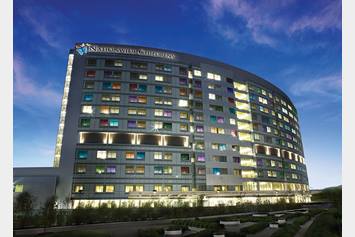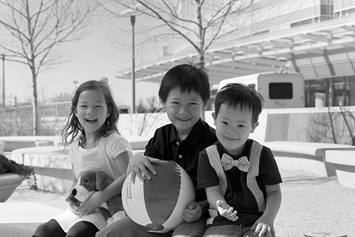Clubfoot (Talipes Equinovarus)
Clubfoot is a condition where a baby’s foot is twisted out of shape or position. It happens when the tendons (tissues connecting muscles to bones) are too short. This makes the foot point down and inward. Doctors can treat it with special casts or surgery to help the foot grow correctly.
What Is Clubfoot?
Clubfoot, also known as talipes equinovarus (TEV), is a common foot abnormality, in which the foot points downward and inward. The condition is present at birth, and involves the foot and lower leg. It occurs twice as often (2:1) in males than in females. It may affect one or both feet (50 % are bilateral). For parents with no family medical history of clubfoot, and no other children with clubfoot, the chance of having a child with clubfoot (random occurrence), is 1 in 1,000. However, if they already have a child with clubfoot, their future children have a 3% (3 in 100) chance of having the same abnormality. Parents who had clubfoot themselves have a 20-30% chance of having a child with clubfoot. Care and management of this is a long process beginning as early as 1 week old and lasting to 4-5 years old or older in some cases.
What Are the Symptoms of Clubfoot?
- Stiff, rigid, foot of varying degrees.
- Short and/or tight Achilles tendon (heel cord), with foot pointing downward.
- The heel is turned in.
- Deep heel crease; soft, puffy heelpad; wide front foot area and overall smaller foot.
What Causes Clubfoot?
Most causes of clubfeet are unknown (idiopathic). The main point to remember is that the mother did nothing to cause this. However, there is a familial tendency noted (passed down from the biologic family) through genes. There are also many associated disorders or syndromes such as developmental hip dysplasia, spina bifida, arthrogryposis, or myotonic dystrophy. The pediatric orthopedist will take a full history and perform a thorough exam to determine if any other testing or referrals are necessary at the first visit.
This foot abnormality can be multi-factorial in nature, meaning there could be several different pre-disposing factors
- Extrinsic: This type is usually mild and supple. The cause can be due to intrauterine compression (large baby, abnormally shaped or small uterus, or abnormal intrauterine fluid levels).
- Intrinsic: This type is commonly more severe, rigid and the calf muscle is smaller. The foot may be smaller and there can be a bone deformity of the talus.
How Is Clubfoot Diagnosed?
Many times, the diagnosis of clubfoot can be noted during a prenatal ultrasound. However, the severity of it cannot be determined until after the child is examined and there is no treatment until after the child is born. If the orthopedist feels a child has a clubfoot associated with another condition or syndrome or there are associated findings, the care-givers will be given an explanation with orthopedic treatment if needed and a referral to another specialist as needed.
How Is Clubfoot Treated?
In the past, very few treatments were available to correct this condition. Over the last century, advances have been made in non-operative treatments, such as casting and bracing as well in surgical techniques. Current treatment consists of casting and bracing or a combination of casting, bracing and surgery. Dr. Ignacio Ponseti developed the Ponseti method for treatment of clubfeet over 60 years ago. The pediatric orthopedic surgeons at Nationwide Children’s Hospital, use this method exclusively. Today, we begin serial casting in most patients, using the “Ponseti method”, as soon as possible after birth or as early as the child and family are available for exam and treatment. The success of treatment depends on the overall flexibility of the foot and parents’ compliance with appointments for casting and brace wear for 4 years or so.
- The bones in a newborn foot are mostly cartilage, therefore they are easily moldable/manipulated.
- We use the casting to slowly stretch the tissues and move the foot into correct position.
- This set of long leg casts requires weekly visits to the Orthopedic Center to change the foot position in an orderly method.
- There are typically 3-6 casts required to complete the process.
- Infants will need to be sponge bathed during this time.
- This process will not affect how they are transported in car seats.
- Many times, we will ask you to bring the infant hungry, ready to be fed by a bottle (if possible) during office visits. This will help calm the child and provide better leg positioning if they are still. A pacifier and/or toys are also very helpful.
- The baby should be dressed in a “onesie” with bulky clothing to go over the casts or an infant sleeper sack-type of outfit.
- Please bring extra diapers and wipes as the plaster can adhere to the diaper and skin as we apply the cast. The plaster does not hurt the skin when we wipe it off.
- Eighty to Ninety percent of patients with clubfeet, (not associated with other conditions), that are treated with the Ponseti technique, will need a small surgery (see surgical treatment section).
- Ten to twenty percent of patients will require reconstructive foot surgery when the child is 1-2 years old. This number can be as high as 40%-50% if the shoes and bar are not used for a full 4 years after casting.
Surgical Treatment
The tight heel cord may respond well to stretching in casts. Many patients (80%-90%), will require a surgical procedure called a Percutaneous Transverse Achilles Lengthening (TAL). Some physicians perform this in an orthopedist office with local anesthesia (such as lidocaine), but most of the surgeons at Nationwide Children's Hospital complete this in the operating room under general anesthesia (fully asleep). The procedure typically takes 15 minutes. A small nick is made in the skin along the crease above the heel bone. This nick will heal with a very tiny scar. The tendon is found and a small cut is made through the tendon to allow it to stretch and lengthen. By lengthening the heel cord, the heel is able to drop down and align correctly for normal standing. After this procedure, the infant will be placed back into a cast for 2-3 weeks before transitioning into special shoes and a brace. With time, 10-30% of children will require a repeat Percutaneous TAL and a smaller percentage will require a small tendon transfer to correct mild rotation. Rarely a child with a severe and/or rigid clubfoot may require more extensive surgery and this will be discussed should the need arise.
What to Expect
Denis-Browne Bar and Shoes
A child’s foot will continue to grow, change and shape for several years. Once the casting is completed, the child will be transitioned into a set of special shoes to keep the foot in correct alignment. This next step in the treatment process is the longest and most important. The special pair of shoes with a bar attached at the bottom will be made for the baby. These are called Denis-Browne Shoes and Bar and they are fit at an orthotist office. The bar, not the shoes, is the main workhorse of this treatment and must be used at all times. The shoes allow for the bar to be attached to the feet so the foot/feet can be rotated outward, maintaining the correct alignment of the pre-bone cartilage as the foot grows. These will be worn 23 of 24 hours per day until the baby begins to stand/walk. At this point, the shoes will be used during naps and bedtime (12 hours a day). This routine will be maintained until the child is 4 to 5 years old or older. If the shoes and bar are worn correctly, as instructed by your doctor, larger, more invasive surgeries can be avoided. It is important for parents/care-givers to recognize the need for continued treatment. Without proper follow-up, the deformity will likely reoccur.
Long Term Follow-Up
It is important to keep regular follow-up appointments after the casts are completed. The orthopedist may be able to notice subtle changes in the child’s foot alignment or flexibility that would suggest the correction is not being maintained with the bar and shoes. If caught early, this alignment can be corrected with some short term cast application. As the child grows, several sets of shoes will need to be made and regular visits with the orthopedist maintained.
Cast Care and Daily Concerns
It is important to check the baby’s toes every hour or so during the first day of casting with each cast change. This is to insure the circulation is good. After the first day, the toes should be checked about every 12 hours. Lightly pinching the toes should cause them to turn pale and then return to pink within a few seconds. If the toes are cool, dusky, and not “pinking up” after elevation and vigorous toe motion, the cast may be too tight. Call the orthopedic center for instructions regarding returning to the clinic or being seen elsewhere for cast removal if the center is closed. You should always be able to see the toes. If they start disappear up into the cast, contact the office. If the foot is not properly aligned in the cast, the correction will be lost. (This tip will be useful with the Denis-Browne shoes as well. If you cannot see all the toes at the edge of the shoes, the foot may not be seated all the way into the shoe and the correction will not be maintained.)
Keep the Cast(s) Clean and Dry
The following is a list of events/issues that may occur which would require the cast to be changed sooner than 1 week intervals.
- If the cast should become very wet- where it falls apart, or if the cast literally falls off just from kicking, please call.
- If the baby seems to be crying more than usual and seems to be in pain, and if the toes are not maintaining a warm and pink appearance, contact the office right away.
- If the child has had a surgical procedure, and the child should develop a temperature over 101 °F through the night, treat the elevated temperature and contact the orthopedic center the next morning.
- If you have questions at any time, the office staff nurses will be happy to assist you.



